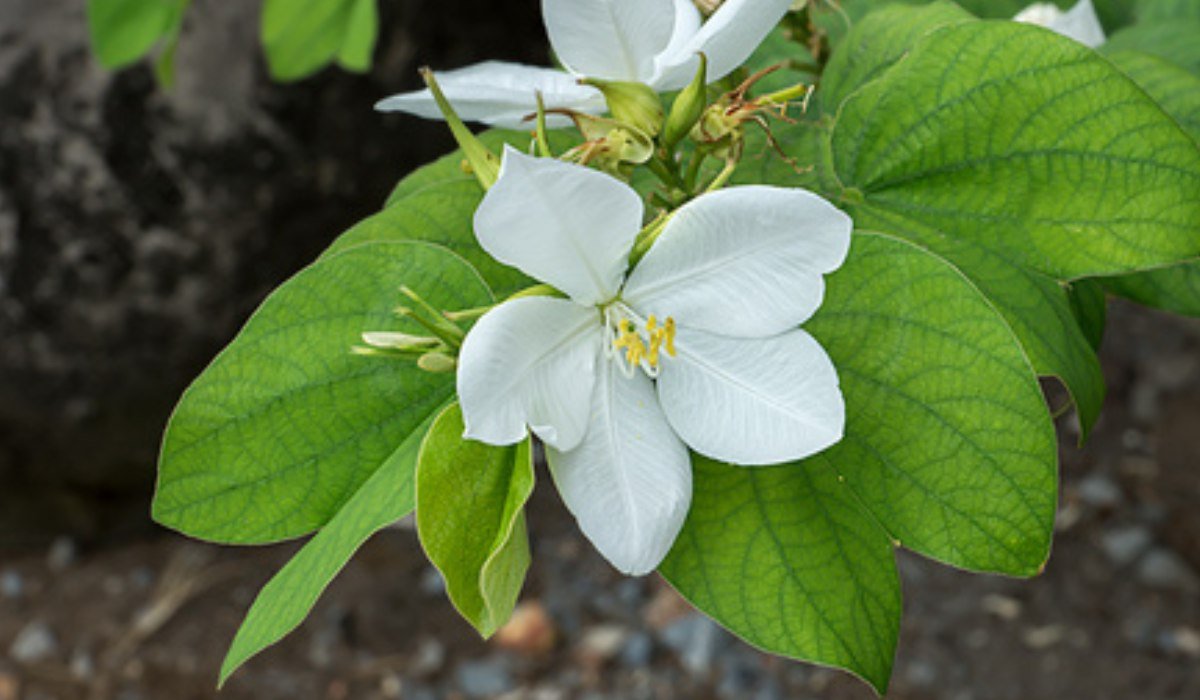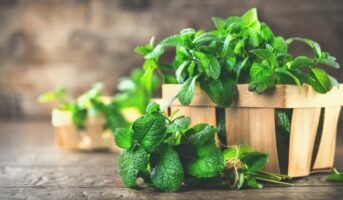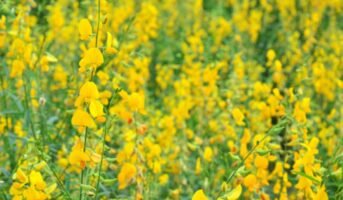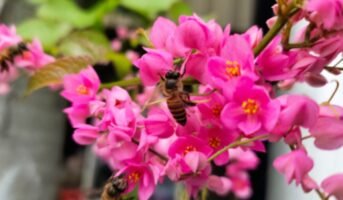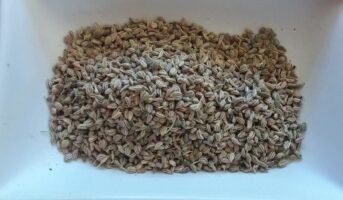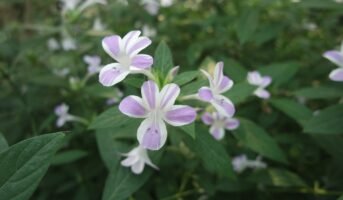Tropical southeast Asia is home to the flowering shrub species Bauhinia Acuminata. Various common names for this plant include snowy orchid-tree, white orchid-tree, and miniature white Bauhinia. The precise native distribution is unknown since it has been cultivated extensively, although it is likely to have originated in Malaysia, Indonesia (including Java, Borneo, and the Lesser Sunda Islands), and the Philippines. Read on to learn more about how to grow and maintain Bauhinia Acuminata in your home garden.

Source: Pinterest
know about: syngonium podophyllum
What is Bauhinia Acuminata?
Bauhinia Acuminata is a species of flowering shrub renowned for its ornamental and medicinal uses. Serving as one of the most popular ornamental plants among gardeners, this erect shrub is widely known for its stunning blooms, which resemble orchids quite closely.
Bauhinia Acuminata: Key facts
| Common name | Orchid tree |
| Scientific name | Bauhinia Acuminata |
| Family | Fabaceae |
| Sun Exposure | Full sun to partial shade |
| Maximum Height | 9 ft |
| Soil pH | 5.5-6.5 |
| Area | Subtropical, Tropical |
| Water | Normal |
| Foliage colour | Green |
See also: What is Hibiscus and how to grow it in your home?
Bauhinia Acuminata: Features
Bauhinia Acuminata plants can reach heights of up to three metres. They are 6 to 15 centimetres long and broad, with the apical cleft up to 5 centimetres deep, and the petiole is 1.5 to 4 centimetres long. As with the other Bauhinia species, the leaves are bilobed and fashioned like an ox hoof.
The Bauhinia Acuminata blooms have a diameter of between three and twelve centimetres, a pleasant aroma, five white petals, ten yellow-tipped stamens, and a green stigma.
The fruit is a pod that can range in length from 7.5 to 15 centimetres and in width from 1.5 to 1.8 centimetres.
Both deciduous and evergreen woods are home to Bauhinia Acuminata.
Bauhinia Acuminata: How to grow?
Bauhinia Acuminata thrives best in hot, humid, and tropical conditions. It is possible to cultivate in cooler regions, but doing so calls for additional care by shielding the plant from frost and mulching it during the winter months. In colder areas, Bauhinia Acuminata will lose its leaves and become deciduous.
Scarify the seeds by rubbing them against a hard surface such as concrete or by making a few tiny cuts in them with a knife. Put the seeds in water that is heated but not boiling, and let them sit there overnight. Plant the seeds in the soil, about half an inch deep from the surface that has good drainage in containers of varying sizes. Moisten it, and then relocate it somewhere sunny. Maintain a moist environment throughout the entirety of the germination process.
If you are not in a tropical location, it is best to germinate these in a greenhouse or to cover your pots with clear plastic, glass, or cling wrap to maintain a humid environment. This covering can be gradually removed as the seedling develops to allow the young Bauhinia Acuminata to acclimate to its new environment.
Germination requires temperatures between 22 and 28 degrees Celsius. Under optimal conditions, it takes seeds around three to four weeks, on average, to begin to germinate.
Once the seedlings have reached a height of 15 centimetres, you should either transplant them directly into the ground or into a larger container. If this needs to be done sooner, they can be relocated without risk after they have at least two or three leaves that have fully developed into adults. After there is no longer any danger of frost, you may move the Bauhinia Acuminata to their permanent location. After being established, it is able to withstand some cold, but only if the base is thoroughly mulched.
It may take Bauhinia Acuminata anywhere from two to three years to attain full maturity.
How to care for Bauhinia Acuminata?
- Put your tree seedlings in a spot that gets either full sun or partial shade.
- Bauhinia Acuminata thrives in damp soil but can withstand periods of drought.
- When the temperature goes to 22 degrees Fahrenheit or lower, Bauhinia Acuminata sheds its leaves but is able to rebound quickly. If the tree is consistently exposed to temperatures below freezing, it will continue to behave like a shrub.
- Bauhinia Acuminata are not known to have any particular fertiliser requirements; nevertheless, according to the University of Florida Institute for Food and Agricultural Science, Bauhinia Acuminata produces the most beautiful flowers when it is fertilised on a consistent basis.
- Occasionally provide the tree with water, being sure to pour it on gently so that it may reach the lower levels of the soil.
- Increase the frequency of watering to once every ten days during the warmest months of summer.
- The tree’s leaves could fall off during dry winters, but they will grow back by the end of winter or the beginning of spring.
- Young Bauhinia Acuminata that have several trunks will need to be staked in order to prevent the trees from falling over in high winds.
- The canopy of Bauhinia Acuminata has the natural appearance of a vase or umbrella, but in order to keep it from breaking, you may need to cut out branches that are not very strong.
- If you just let nature take its course, Bauhinia Acuminata will eventually produce many trunks and low branches.
- You can prune away the suckers and the lower branches to encourage tree-like development.
What are the benefits of Bauhinia Acuminata?
There are plenty of benefits of growing Bauhinia Acuminata.
Bauhinia Acuminata: Medicinal benefits
The Javanese use the roots of Bauhinia Acuminata to cure coughs and colds. In India, asthma attacks can be treated by drinking a decoction made of leaves and bark.
Bauhinia Acuminata: Landscaping uses
The use of Bauhinia Acuminata provides the gardener or landscaper with a number of benefits.
- They grow to be around the size of a medium (or even a small) tree, which makes it simple to manage their size.
- Bauhinia Acuminata even have the potential to become excellent bonsai plants, and they do have a touch of an Eastern air about them, at least in the form of a tree. A stunning canopy that can be adjusted to any height up to twenty feet short of its maximum is always a desirable feature.
- The resemblance of Bauhinia Acuminata to those of orchids is one of the plant’s most appealing features.

Source: Pinterest
Bauhinia Acuminata:Toxicity
Bauhinia Acuminata is not toxic at all for either plants or animals. In fact, parts of this plant are edible and have culinary uses. You can safely plant it in your home garden.
FAQs
Is Bauhinia Acuminata edible?
You may eat the young leaves and blossoms of the Bauhinia Acuminata plant. The flower is used in various culinary dishes.
Where are Bauhinia Acuminata plants native to?
Bauhinia acuminata is native to tropical southeastern Asia.1
Housing News Desk is the news desk of leading online real estate portal, Housing.com. Housing News Desk focuses on a variety of topics such as real estate laws, taxes, current news, property trends, home loans, rentals, décor, green homes, home improvement, etc. The main objective of the news desk, is to cover the real estate sector from the perspective of providing information that is useful to the end-user.
Facebook: https://www.facebook.com/housing.com/
Twitter: https://twitter.com/Housing
Email: [email protected]
